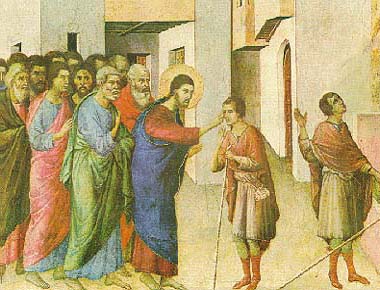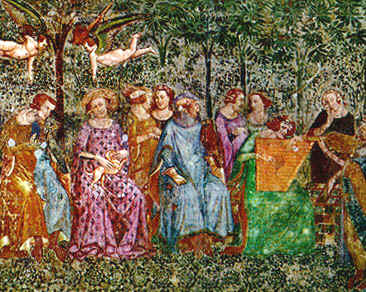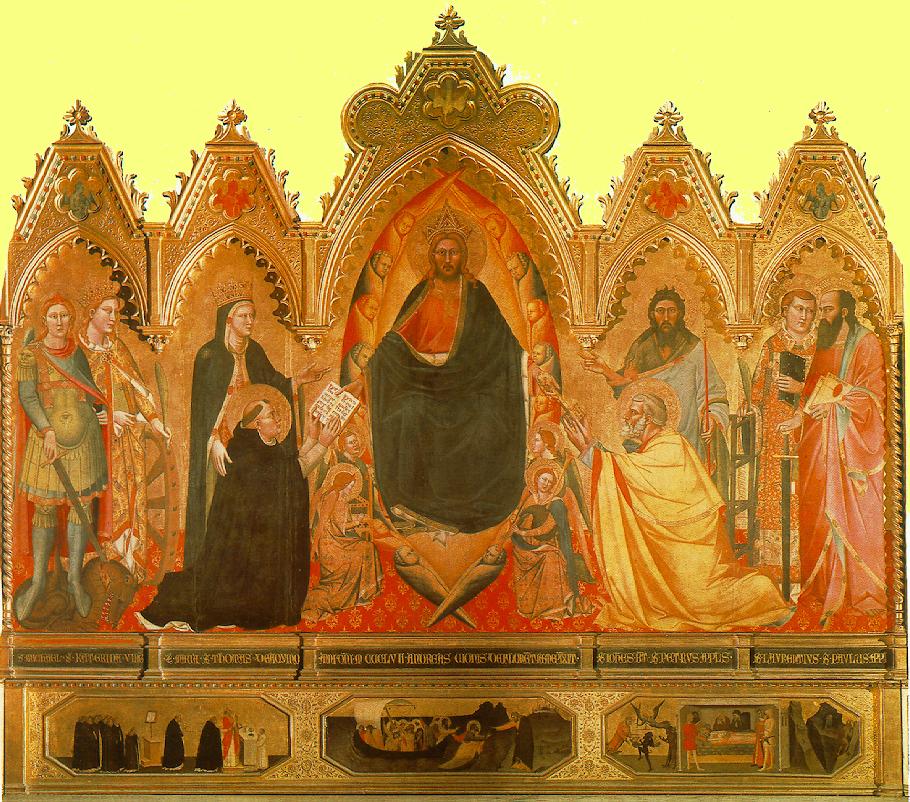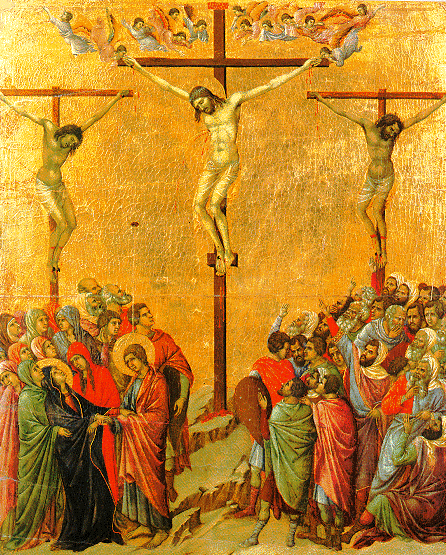 |
Marked by crowded, paranoid compositions, ugly, menacing faces, bright colors and increased violence, Black Death art is unbalanced and uneasy. In Duccio’s Crucifixion, we can see the fierce conspiratorial expressions in the crowd as they point up to Christ, whose side is spurting blood. Mary falls against a group of women, including Mary Magdalene, ready to faint. |
Alessandro Triani’s Triumph of
Death (Trionfo della Morte) and The Last Judgement are masterpieces of the Sienese period. Painted in 1350, The Triumph of Death depicts rich
nobles out for a picnic in the countryside, unaware that the plague (in the shape of a
grotesque hag) is ready to strike. In The Last Judgement, Triani’s Christ is severe
and inaccessible, with his gaze leveled against the sinners in punishment. This is a far
cry from Giotto’s last judgement, with its softer, more serene Christ. These frescoes were burnt in the
bombing of Pisa in WWII by American planes. Barna da Siena, too, paints turbulent
scenes. |
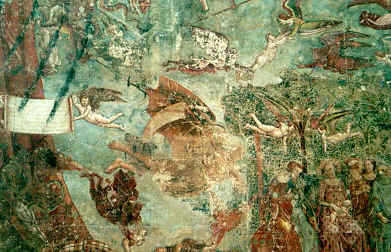 |
|
|
|
